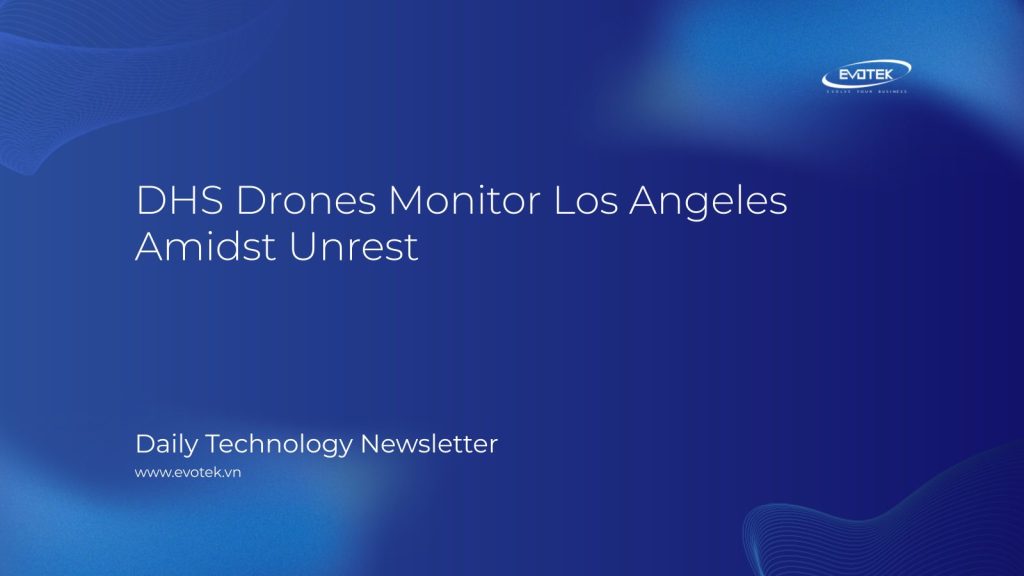Amidst the recent unrest in Los Angeles, the Department of Homeland Security (DHS) has deployed Predator B drones, also known as MQ-9 Reapers in their military configuration, to provide aerial surveillance. This move, confirmed by U.S. Customs and Border Protection (CBP), is part of the government’s response to protests that have occasionally turned violent following recent ICE operations.
Controversy Surrounds Drone Surveillance
The use of these drones has ignited debate. Civil rights advocates argue that persistent aerial surveillance infringes upon privacy rights and constitutional protections. While the deployment of Predator B drones over urban areas is infrequent, it is not unprecedented. Manned aircraft conduct similar surveillance operations across the nation daily.
According to CBP spokesman John Mennell, Air and Marine Operations (AMO) “MQ-9 Predators are supporting our federal law enforcement partners in the Greater Los Angeles area, including Immigration and Customs Enforcement, with aerial support of their operations. Additionally, they are providing officer safety surveillance when requested by officers. AMO is not engaged in the surveillance of First Amendment activities.”
U.S. Customs and Border Protection confirmed its Predator B drones are monitoring unrest in Los Angeles. (CBP Photo)
Social Media Uncovers Drone Activity
Despite CBP’s initial silence, open-source reporting on social media revealed evidence of drone activity. User @Aeroscout on X posted air traffic control audio indicating two “Q-9s” – call signs TROY 703 and TROY 701 – were operating in the airspace. Further analysis confirmed that “TROY” is a known DHS callsign.
Plane trackers also noted aircraft flying hexagonal patterns over Los Angeles, a typical surveillance pattern for CBP Predator B drones. This tactic was previously used in Minneapolis during the 2020 protests following George Floyd’s death.
Drone Capabilities and Configurations
CBP operates MQ-9s from Sierra Vista, Arizona; San Angelo, Texas; and Grand Forks, North Dakota. The exact configuration of the drones used over Los Angeles remains unclear. However, CBP-113, previously identified as a Guardian Maritime Mission version, features advanced radar and imaging capabilities.
The Guardian Maritime Mission version boasts a Raytheon SeaVue multi-mode radar, surface search, and synthetic aperture radar (SAR) capabilities. SAR images provide detailed surface maps regardless of weather conditions. These drones also feature electro-optical and infrared cameras for real-time imagery.
CBP’s Predator B fleet includes baseline versions with Lynx SAR-capable radar and multi-role variants with additional sensor pods. All CBP Predator Bs are unarmed.
Broader Response to Unrest
The drone deployment is part of a larger response to the unrest, which has seen clashes between protesters and law enforcement. U.S. Northern Command (NORTHCOM) has activated a Marine infantry battalion to support federal personnel and property protection in Los Angeles.
Task Force 51, comprised of National Guard soldiers and active-duty Marines, is trained in de-escalation and crowd control.
Privacy Concerns and CBP’s Response
The use of surveillance drones raises significant privacy concerns. CBP addressed these concerns by stating, “AMO does not possess or use facial recognition technology on any of its aircraft. AMO does not own or have access to any facial recognition algorithms or software.”
The agency further clarified that on-board cameras lack the resolution to identify individuals or license plates but can discern clothing color and the presence of weapons.
Despite these assurances, the deployment of drones over protest areas is expected to fuel further debate about government surveillance and civil liberties. Similar deployments are likely as protests spread to other cities.
By Howard Altman and Joseph Trevithick

 日本語
日本語 한국어
한국어 Tiếng Việt
Tiếng Việt 简体中文
简体中文